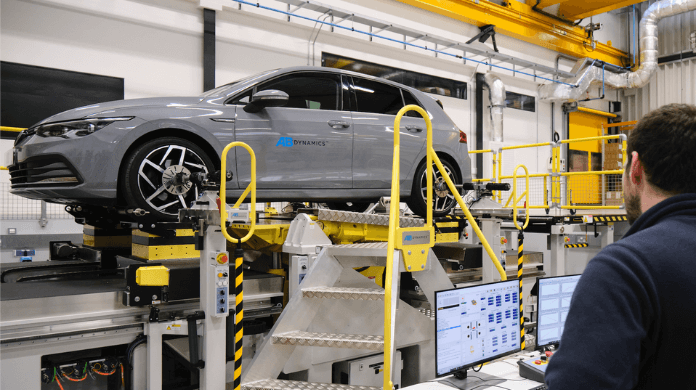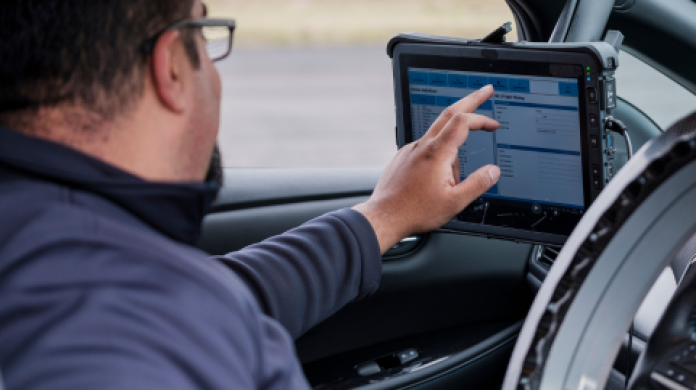In a recent announcement, the US federal government's National Highway Traffic Safety Administration (NHTSA) has proposed a ground-breaking regulation that could have a transformative impact on road safety. NHTSA is advocating for all new passenger cars and light trucks sold in the United States to be equipped with automatic emergency braking (AEB) systems.

This directive carries immense significance for both the automotive industry and the safety of motorists and pedestrians. In our latest blog post, David Marquette, Business Development Director at AB Dynamics North America, delves into the details of the proposed mandate, its potential implications, and the role of companies in supporting its implementation.
The Power of Automatic Emergency Braking (AEB)
Automatic emergency braking (AEB) is a safety technology designed to assist drivers in mitigating or avoiding collisions. By employing sensors, cameras, and sophisticated algorithms, AEB systems detect potential hazards and automatically apply the brakes to prevent or reduce the severity of accidents. This technology has proven to be highly effective in preventing injuries and saving lives by providing an additional layer of protection and response capabilities.
For example, research conducted by the European Commission indicated that vehicles equipped with AEB technology experienced approximately 38% fewer rear-end crashes. Additionally, the same study highlighted that AEB systems with pedestrian detection reduced pedestrian fatalities by approximately 27%.
NHTSA's Proposal
NHTSA's primary mission is to ensure road safety by establishing and enforcing vehicle performance standards and regulations. They work to improve vehicle and road safety, reduce accidents, and promote innovations in transportation technologies. NHTSA also plays a crucial role in shaping policies and initiatives aimed at protecting motorists and pedestrians across the US. Its latest proposal to make AEB systems mandatory in all new passenger cars and light trucks is a significant step towards enhancing road safety.
NHTSA estimates the technology could reduce injuries by at least 24,000 annually and save over 360 lives per year; however, it's important to note that this appears to be a conservative estimate based on over 70,000 car pedestrian accidents annually in the US where 9% result in death. The proposal will now go through the process of consultation and review. This allows for discussions among stakeholders to address concerns, fine-tune regulations and importantly allows the needed time for the automotive industry to ensure their vehicles and technology are ready for the forth coming rule making.
Lessons from the EU
The European Union (EU) has already taken strides in implementing AEB technology. Since 2022, AEB has been mandatory on all new model passenger vehicles introduced in the EU and by 2024, every new car sold in the EU will need to be fitted with this technology. This serves as a valuable precedent, demonstrating the successful integration of AEB systems and their positive impact on road safety. The EU's experience can provide insights and best practices for the US as it moves towards implementing similar regulations.
Supporting implementation
Companies like AB Dynamics currently play a vital role in supporting the implementation of AEB systems and ensuring their effectiveness. We have developed advanced testing, simulation, and validation solutions that enable automakers to develop and test the performance of AEB systems. For example, the Guided Soft Target (GST) system, consisting of the GST platform and Soft Car 360, is one of the core technologies used to evaluate and enhance the capabilities of AEB systems. By simulating real-world scenarios and providing a controlled testing environment, these technologies enable automakers to validate the functionality, reliability, and safety of AEB systems before they are deployed in vehicles.
Key takeaways
NHTSA's proposed regulation mandating automatic emergency braking (AEB) systems in all new passenger cars and light trucks sold in the US is a significant stride towards a safer future on the roads.
- By leveraging the power of safety technologies, such as AEB, there is opportunity to prevent accidents, mitigate the impact of collisions, and save lives.
- Implementation may take time due to the consultation and review processes; however, lessons from the EU's successful AEB adoption can guide the US on its journey.
- Companies like AB Dynamics, with our testing, simulation, and validation solutions, will continue to play a crucial role in supporting the automotive industry in integrating and optimising AEB systems.
- NHTSA estimates AEB technology could reduce injuries by at least 24,000 annually and save over 360 lives per year, but data suggests this is a conservative number.
For more information on how AB Dynamics can support your AEB systems testing requirements, contact us at info@abdynamics.com











